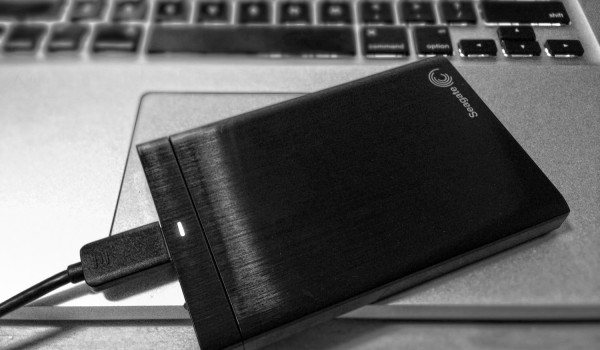Best Usb Format For Mac
Most NAS devices in this price range use slower ARM-based processors from Realtek, Alpine, or Marvell, or older-generation Celeron processors. Some still ship with 1 GB of RAM or less. The DS218+ has a modern dual-core 2.0 GHz Intel Celeron processor and 2 GB of RAM, which you can expand to 6 GB. The Linux-based DiskStation Manager (DSM) software isn’t complicated; if you’ve used a Windows or Mac computer, you’ll be able to find your way around DSM and figure out how it works pretty quickly. Our runner-up, the uses the same Celeron processor and 2 GB of RAM, but the DS218+’s CPU is faster than the processor in nearly every other NAS currently available in this price range, and you’ll notice that speed difference when copying lots of files or performing multiple backups simultaneously. 

Photo by Sharon Vaknin/CNET If you need to expand your storage space with an external hard drive and you use both Mac and PC, you'll likely run into a few obstacles. Hard drives advertised as being compatible with Windows and Mac OS may have misled you into thinking you could actually use one hard drive for both computers. You can, but not out of the box.
Most external hard drives (HD) are sold in a format called NTFS, which is designed to work with Windows. Macs read and write to a different format, called HFS+.
Another format, called FAT32 is compatible with both OS platforms. Here's a look at how the different HD format types function: FAT32 (File Allocation Table) - Natively read/write FAT32 on Windows and Mac OS X. - Maximum file size: 4GB - Maximum volume size: 2TB NTFS (Windows NT File System) - Natively read/write NTFS on Windows. - Read-only NTFS on Mac OS X - Native NTFS support can be enabled in Snow Leopard and above but has proven instable. - Maximum file size: 16 TB - Maximum volume size: 256TB HFS+ (Hierarchical File System, aka Mac OS Extended) - Natively read/write HFS+ on Mac OS X - Required for Time Machine - Maximum file size: 8 - Maximum volume size: 8EiB Isn't FAT32 the obvious solution? According to the list above, formatting your hard drive to FAT32 so that you can read and write on either OS seems like the obvious solution. The video and directions below will guide you through the process, but before you format your HD to FAT32, beware of these drawbacks.
• FAT32 offers no security, unlike NTFS, which allows you to set permissions. If your HD gets into the wrong hands, that person will be able to access your data. • The max size for any given file stored on a FAT32-formatted HD is 4GB. So, for example, if you want to store a 9GB movie, it will be impossible. • In general, FAT32 drives are more susceptible to disk errors.

Macs before 2012 only have USB 2.0 but the good news is that all USB 3.0 external hard drives are backwards compatible with USB 2.0 ports. The only difference is you will get a maximum data transfer speed of 480Mbps compared to 5 Gbps with USB 3.0 (see the port connection speed comparison table below for an overview of speed differences between connection ports). For desktops using a USB drive, there are only two differences to be concerned about. FAT32 is the older version of FAT and can't handle file sizes larger than 4GB. ExFAT is not compatible with computers older than Windows Vista or Mac OS X 10.6.5. How to format a drive on a Mac Here's how to format a drive using a Mac - including how to format a drive for Windows and Mac so the contents can be read on both platforms, and what format to use.
Best Format For External Usb Mac
• It's not a huge issue, but FAT32 is less efficient at storing files. Its large cluster sizes waste disk space, unlike the other HD storage formats. 2:55 If you've considered these issues and would still like to use FAT32, this video will guide you through the process of formatting your HD to FAT32 using a Windows or Mac PC: OK, what are my alternatives to using FAT32?
The good news is, it's not FAT32 or nothing. The alternative solutions do require more tinkering, but if you do not want to risk FAT32's lack of security, choose from one of the following alternatives. Option 1: Format to NTFS, and use NTFS-3G to read/write on Mac. If you keep your hard drive's out-of-the-box NTFS format for all the reasons FAT32 displeases, there's a workaround that will allow your Mac to read and write files to the drive. Is an open-source program that, when coupled with, will let you use your NTFS drive on your Mac. However, it is an open-source program, so use it at your own risk. Many have vouched for its success, but others complain about bugs.
The commercial solution, which will give you access to support and software updates, is. It's $20, offers Lion support, and you get a five-day trial to try before you buy. Option 2: Format to HFS+, and use HFS Explorer to read/write on PC. Conversely, you can format the HD to HFS+ and use HFSExplorer for Windows to read and write to the Mac-formatted hard drive. To get started, you'll first have to format the hard drive from NTFS to HFS+.
Best Usb Format For Mac
Here's how: Plug your HD into the Mac and open Disk Utility, which can be accessed by searching for it in Spotlight. Then, select your hard drive from the left sidebar. Now go to the Erase tab. In the Volume Format list, select Mac OS Extended (Journaled). Then, click Erase at the bottom to format the drive.